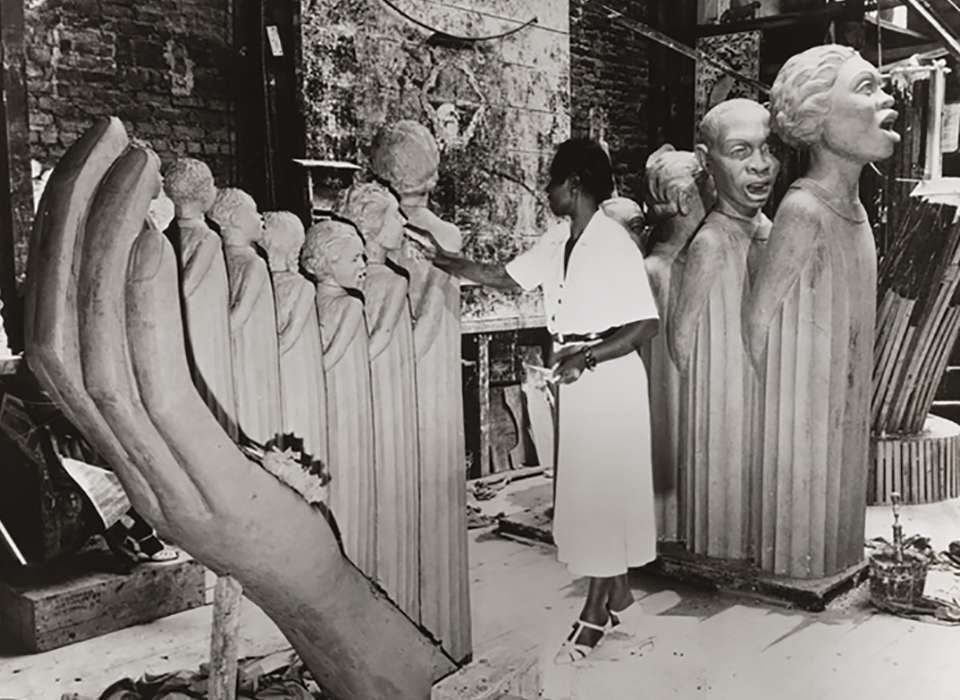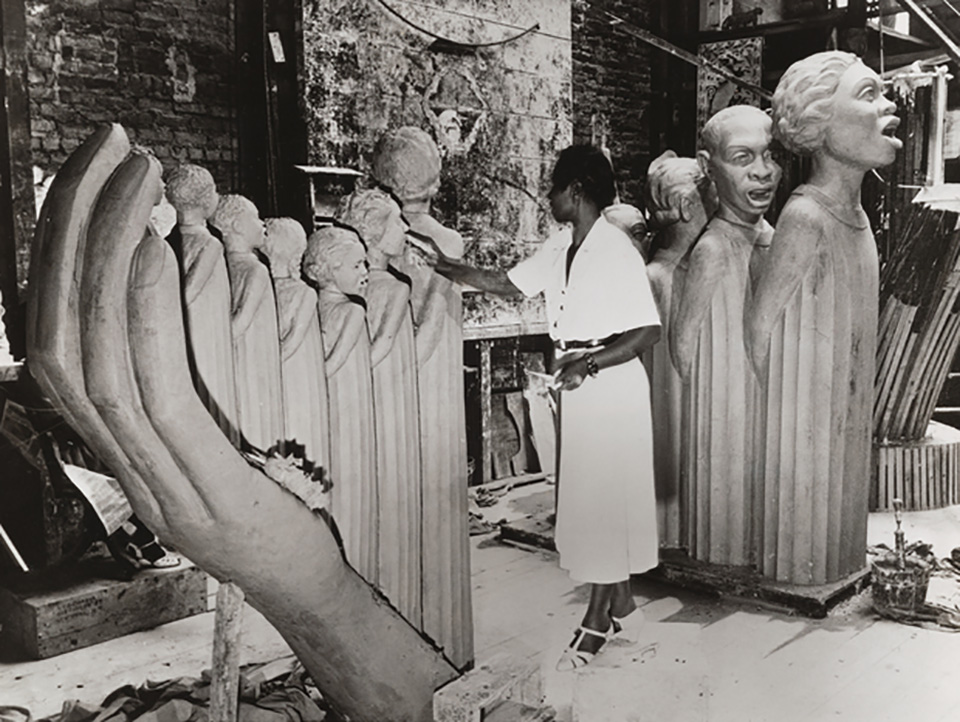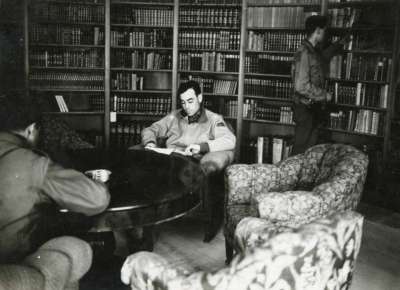In his aptly titled book Lift Every Voice and Sing: A Celebration of the Negro National Anthem; 100 Years, 100 Voices, then-chairman of the NAACP Julian Bond offers a historical reconstruction of the process by which the famous hymn became associated with the Civil Rights movement. He quotes the late Senator Edward Brooke (R-MA), the first African American popularly elected to the US Senate, about Brooke’s recollection of the song’s role in World War II:
”The stirring words of James Weldon Johnson and the soul-gripping music of his brother J. Rosamond Johnson stayed with me when I served with the brave enlisted men and officers of the Negro 366th Infantry Combat Regiment in Italy fighting in World War II in a segregated U.S. Army to preserve world freedom and liberty. When the morale of our troops was low, as it often was, we sang our Negro National Anthem. It sustained us and helped us to carry on.”
By the time soldiers sang it on the battlefields of World War II, the words and music of “Lift Every Voice and Sing” had already been a beacon in struggles past, carried on from school children to hymn books to most every African American household in the United States.
James Weldon Johnson (1871-1938), was principal at the Stanton School in Jacksonville, Florida when he wrote the lyrics in 1900. The man who later became a famed writer of the Harlem Renaissance, the head of the NAACP, US consul in Venezuela and Nicaragua, and the first African American professor to be hired at New York University, wrote the poem for a local commemoration ceremony of the birthday of Abraham Lincoln. His brother, J. Rosamond Johnson, put the poem to music and a choir of 500 Stanton School children sang it at the event. Not expecting “Lift” to become anything other than a one-time musical tribute, Johnson reminisced years later:
”Shortly afterwards my brother and I moved from Jacksonville to New York, and the song passed out of our minds. But the school children of Jacksonville kept singing it, they went off to other schools and sang it, they became teachers and taught it to other children. Within twenty years it was being sung over the South and in some other parts of the country. Today, the song, popularly known as the Negro National Hymn, is quite generally used.”
By 1935, at the time Johnson was looking back at the song’s development, “Lift Every Voice” had taken on a universally revered role in African American communities. Black newspapers and journals reprinted the lyrics to “Lift Every Voice and Sing” shortly after the commemoration ceremony, and by the 1920s the song could be found pasted inside the back covers of hymnals across the country. It was carried to new audiences every time it was sung in private or public gatherings, evolving through both formal and informal means—finally gaining significant recognition in 1920 when the NAACP chose it as the official song of the organization. “Lift Every Voice and Sing” was sung in most every context of public or private life—in school assemblies, at dances and conventions, during meetings, at church, public clubs, and more.
Its importance in the pre-WWII world is embodied by Harlem Renaissance artist and sculptor Augusta Savage, who was chosen as only one of four women and one of two African Americans to present work at the 1939 World’s Fair in New York. For her piece, a larger than life, harp-like structure made out of sculptures of African American singers held up and cradled by an oversized hand, she chose the title “Lift Every Voice and Sing” (later renamed “The Harp” against her will). It became one of the most photographed and famous pieces in the entire fair.
Augusta Savage working on “Harp” (Lift Every Voice and Sing). The sculpture was commissioned for the New York World’s Fair. Courtesy of The New York Public Library Digital Collection.
World War II was a catalyst—and amplifier—for the struggle for civil rights as soldiers and civilians fought for a Double Victory against fascism abroad and racism at home. African Americans knew that their loyalty to America far exceeded the loyalty extended back to them by the country. The Double V initiative, mounted by one of the most significant black newspapers of the time, The Pittsburgh Courier, was based on a letter to the editor. In it, James Thompson of Wichita, KS, wrote:
“I suggest that while we keep defense and victory in the forefront that we don’t lose sight of our fight for true democracy at home.”
James Thompson, The Pittsburgh Courier
“Lift Every Voice and Sing” was often sung to express solidarity in the face of this dual battle. As the war effort on the home front ramped up and the country’s focus was on winning the war abroad, African American voices added “Lift” to virtually every gathering. Its’ sentiment was evoked at every rally and in every written statement about the issue. Even when the song was used in the most patriotic context possible, for African Americans it embodied the spirit of the Double V campaign.
The same held true for the active military, where the song was sung by African American troops at informal gatherings, sporting events, and formal assemblies and functions. Black servicemen also brought the song to the battlefields of Europe and Asia where it fulfilled another, important role. James Weldon Johnson’s lyrics are about transcending difficulties, referring back to struggles of the past but with a deeply ingrained sense of optimism for the future: “Facing the rising sun of our new day begun, let us march on ’til victory is won.” The words had powerful meaning to black soldiers. As Brooke wrote, “It sustained us and helped us to carry on.”
After victory in the war against Germany and Japan, “Lift Every Voice and Sing” continued to inspire the struggle for civil rights, sharing the spotlight with new anthems like “We Shall Overcome.” However, it gained renewed intensity and urgency in the 2000s, where it has been performed both at the inauguration of President Obama as well as on pop-concert stages by Beyoncé and others. The song remains an emblematic statement about life as it should be, and work that still needs to be done.
Lyrics:
Lift ev’ry voice and sing,
‘Til earth and heaven ring,
Ring with the harmonies of Liberty;
Let our rejoicing rise
High as the list’ning skies,
Let it resound loud as the rolling sea.
Sing a song full of the faith that the dark past has taught us,
Sing a song full of the hope that the present has brought us;
Facing the rising sun of our new day begun,
Let us march on ’til victory is won.Stony the road we trod,
Bitter the chastening rod,
Felt in the days when hope unborn had died;
Yet with a steady beat,
Have not our weary feet
Come to the place for which our fathers sighed?
We have come over a way that with tears has been watered,
We have come, treading our path through the blood of the slaughtered,
Out from the gloomy past,
‘Til now we stand at last
Where the white gleam of our bright star is cast.God of our weary years,
God of our silent tears,
Thou who has brought us thus far on the way;
Thou who has by Thy might
Led us into the light,
Keep us forever in the path, we pray.
Lest our feet stray from the places, our God, where we met Thee,
Lest, our hearts drunk with the wine of the world, we forget Thee;
Shadowed beneath Thy hand,
May we forever stand,
True to our God,
True to our native land
Jenny Craig Institute for the Study of War and Democracy
Jenny Craig Institute for the Study of War and Democracy is a national center for research, higher education, publications, and public programming.
Cite this article:
MLA Citation:
APA Citation:
Chicago Style Citation:







![Max Fuchs, New York City cantor, sings as Rabbi Sydney [sic] Lefkowitz, Richmond, VA, conducts the first Jewish services from Germany.](/sites/default/files/styles/max_650x650/public/2025-10/image1.jpg)


